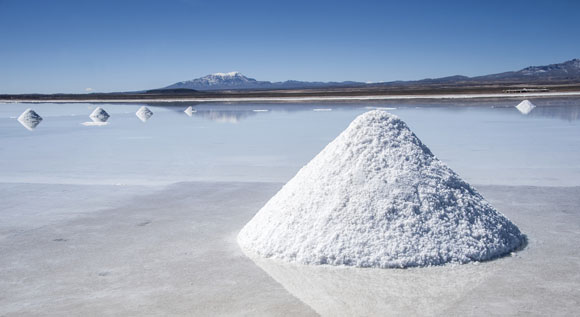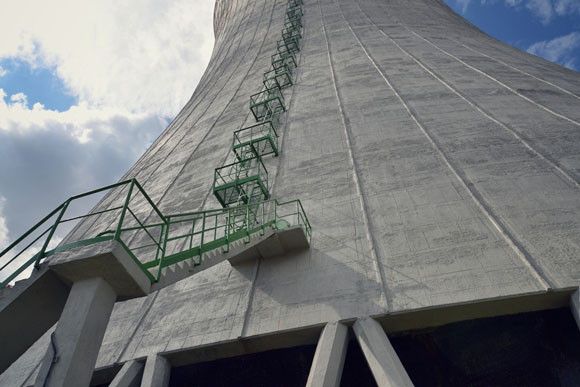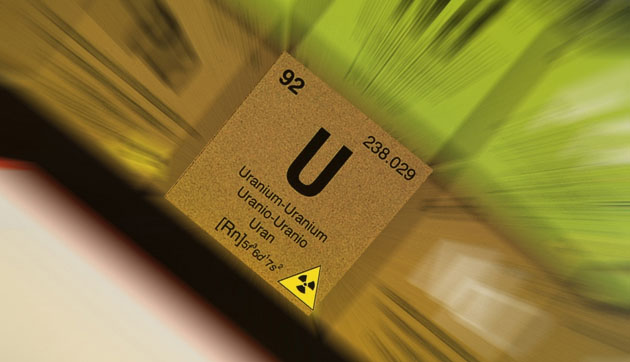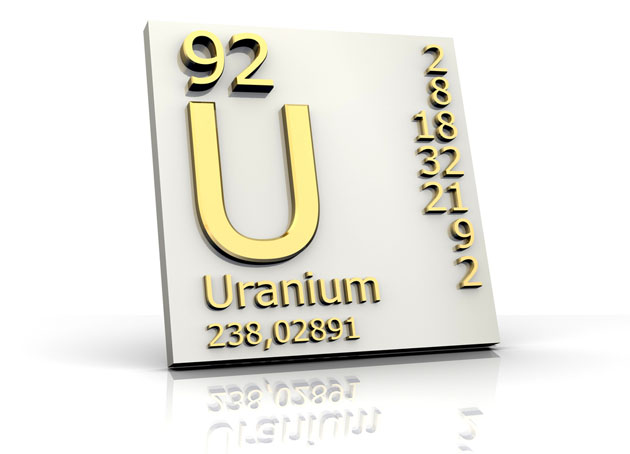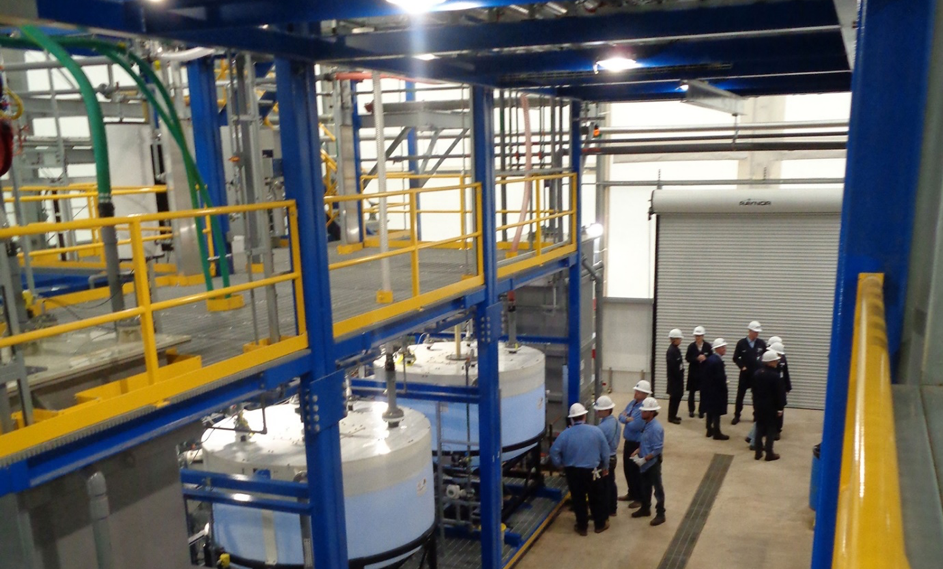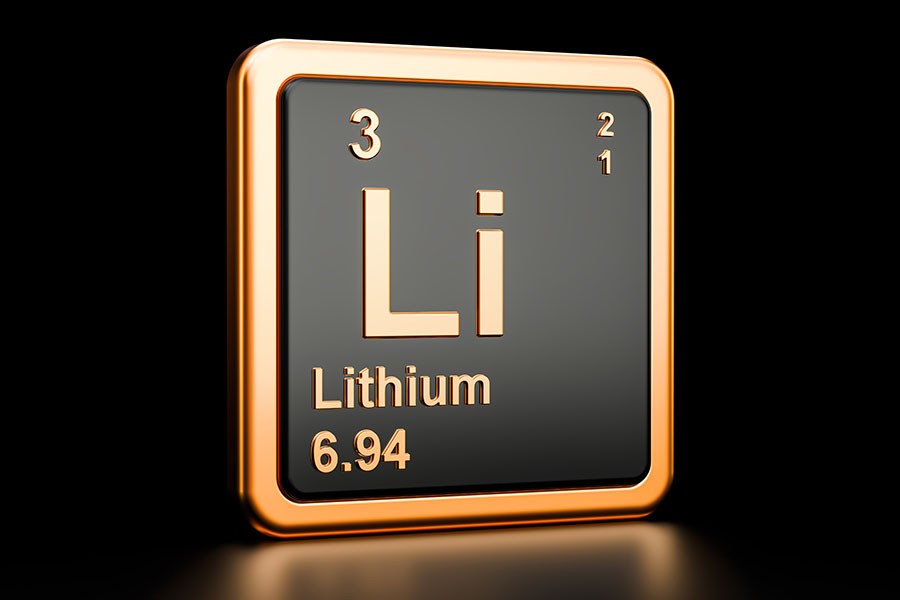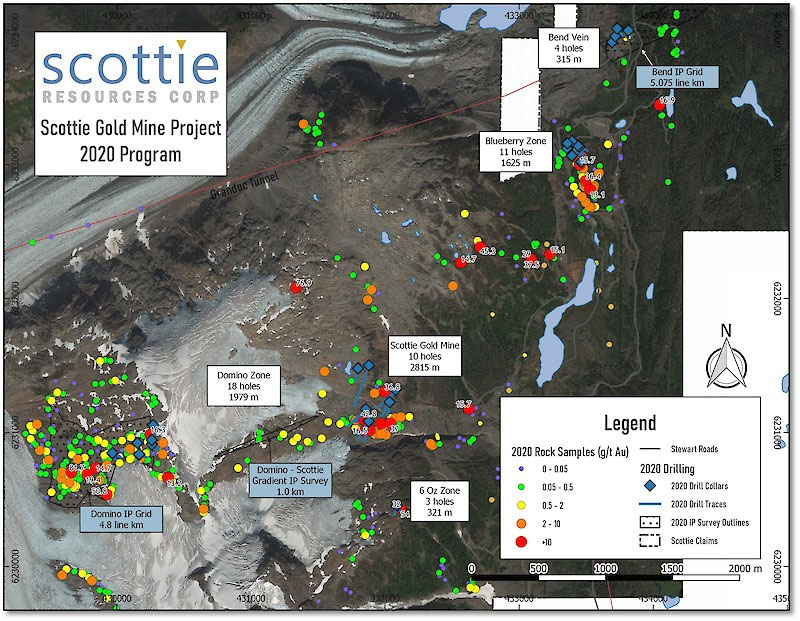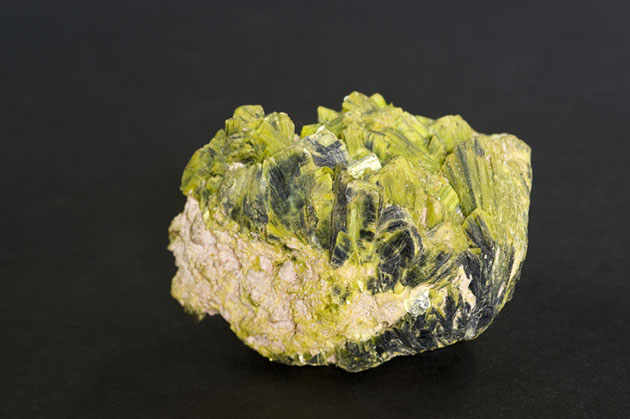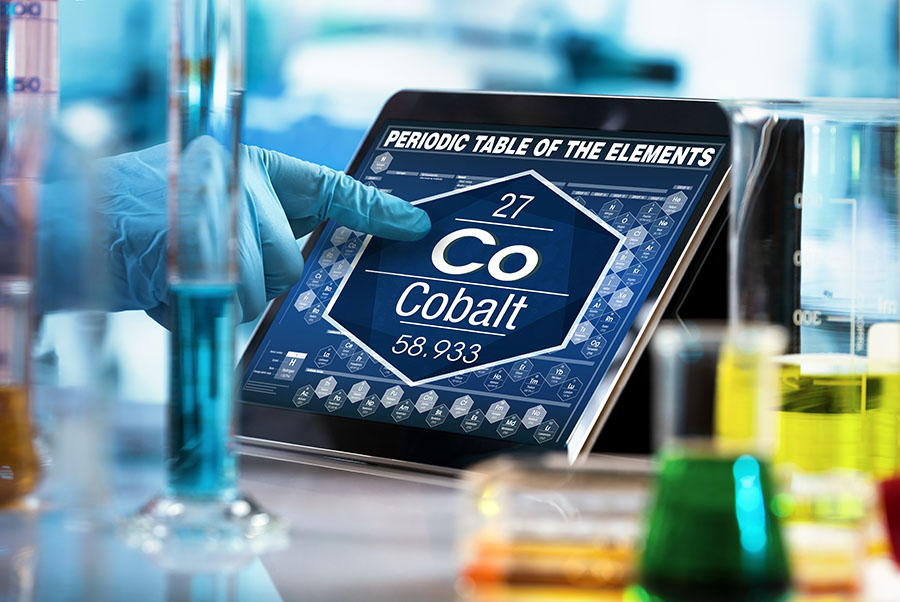The Energy Report: The FTSE AIM All-Share Index recently crossed the 100-day moving average to the upside. How are you interpreting that signal?
Paul Renken: That move happened in early April, and means the market is moving upward for micro-cap natural resources stocks here in London. About two weeks after, the FTSE AIM All-Share Oil & Gas Index also moved above its 100-day moving average. Right now, we're looking at a gain of about 29% since the lows were set in early February. Things are looking quite favorable in the micro-cap space.
TER: Why is this happening now?
PR: It appears that some of the policy and taxation changes that have taken place in the last 12 months here in Europe—and the United Kingdom (U.K.) specifically—are creating extra liquidity in the smallest end of the market. Investors—particularly private investors and people with pension money to invest—are actually getting more favorable treatment by putting mining stocks into their portfolios. That's all good news.
TER: As someone who's taking and exiting positions in different micro-cap names, what are you seeking at this stage?
PR: When companies release good news, share prices are once again moving up. That means investors are looking for news catalysts in these micro-cap stocks. Investors should be able to take a position sometime in advance for what is anticipated to be good news, whether that's drilling results, permit approvals or a change in management. That's how we're positioning.
"If Nemaska Lithium Inc. can produce lithium hydroxide in a single step, which seems possible, it would be quite competitive with other producers."
The interesting thing is that the activity here in the London market is not commodity-price driven. Even if the commodity price over the last six months hasn't done any favors for the sector or a stock in particular, it doesn't seem to matter.
TER: That said, many basic materials commodities are seeing steady, if not rapid, price increases. Which ones specifically?
PR: We are focused on battery materials such as lithium, both the carbonate and hydroxide. The quote prices are back to where they were on a per ton basis in 2007, which was the previous price peak. Other basic materials include things like rare earths and graphite.
TER: London-based Benchmark Mineral Intelligence reports that as many as five battery manufacturing "megafactories" will be built over the next five years. Of course, Tesla Motors Inc.'s (TSLA:NASDAQ) Gigafactory is coming to Nevada in 2020. Benchmark says four similar factories are being built in China, and those factories would bring the world's production capacity to 122 gigawatts (122 gW), up from 35 gW today. How should investors see that news?
PR: Investment in these battery manufacturing facilities means people are putting a significant amount of money into the forward-thinking picture that sees batteries as critical components in a range of manufactured products, namely cars and high-technology devices. Tesla, for instance, has made announcements about its upcoming series of automobiles as well as what it calls the Powerwall, for home-based power management. The megafactories in China are being built because the Chinese government is getting serious about reducing vehicle pollution by encouraging consumers to choose electric vehicles. It is a wave of the future—it's where the risk capital is flowing, so I suspect we should pay close attention to that.
TER: Are you surprised by the number of factories being built?
PR: I'm not surprised. There's actually another factory in Europe that wouldn't be in the megafactory category but has expansion plans to become one. That adds up to six.
"The mineralization is shallow at Fission Uranium Corp.'s Triple R and amenable to mining."
The really interesting thing is the amount of money being invested ahead of actual consumer demand. It means that risk capital is going into the manufacturing end of the business. It's more or less an "if-you-build-it-they-will-come" mentality in the battery/electric vehicle sector.
TER: Four of these megafactories are in China. Does China have sufficient raw materials to feed its domestic factories, or will it have to look at importing raw materials?
PR: Our research says the Chinese will have the raw materials because they have already been making equity investments at the project or company level in the upstream end of the lithium market, namely some early-stage players with lithium-bearing deposits.
Also, if the growth in battery usage—particularly in large-scale batteries for things like electric vehicles, but also in the stationary storage market for storing power from alternative energy sources—scales up according to projections, then essentially all the known lithium deposits in the world will have to be put into production just to feed that market. In other words, the demand for lithium in 10 years' time will have at least doubled. All the current lithium projects will be needed at some point.
TER: What are some things you look for in a lithium producer or developer?
PR: We're looking for three things in particular when we are reviewing either a deposit or a company.
First, we look at the size and grade of the resource. It's all well and good to have a lithium deposit, but if it's not scalable the story is not going to garner much institutional interest.
Second, we look for the kind of capital intensity a deposit requires to reach production. We like two scenarios: We like a large, low-grade deposit with a fairly straightforward production plan, such that it will last for decades and have an appropriate return on its significant initial capital investment. We also like a smaller-scale operation, like an underground mine, which is less capital intensive and easier to finance to get into production.
"NexGen Energy Ltd. has proven that the same feature mineralized on FCU's ground is mineralized with high-grade uranium on its ground."
Third, we ask where the deposit fits in relation to a potential market. Who ultimately will be the lithium offtaker? Are there battery plants or original equipment manufacturers inside several hundred kilometers of the deposit, such that it will have a logistical price advantage over sources of lithium from far-flung countries?
TER: Tell us about some lithium names that VSA Capital follows.
PR: VSA is working on an initial public offering (IPO) for a private company called European Lithium Ltd. The company is raising £5 million (£5M) to bring the Wolfsberg lithium project, a hard-rock spodumene (lithium-bearing feldspar) deposit in Austria, into production. The £5M will help complete a prefeasibility study on a deposit that was discovered more than 30 years ago and that has been test-mined underground.
Until recently, lithium prices were insufficient to mine lithium profitably at Wolfsberg. The idea is to get it into production sometime around 2018, and to ultimately produce about 12,000 tons (12 Kt) of lithium carbonate-equivalent annually. Given that Austria is quite close to several European battery manufacturers, as well as European automakers, it should have a logistical advantage over other suppliers. European Lithium is the first mining IPO in London to be offered to the retail markets through a crowdfunding web portal, too. You can actually participate as a retail investor through PrimaryBid.com on this IPO.
TER: What's your view on crowdfunding mining equities?
PR: Crowdfunding is catching on nicely here in Europe, but what's even more important is that the U.S. Securities and Exchange Commission (SEC) has implemented a rule under Regulation A-Plus that essentially gives seed-capital funding by retail investors preeminence at the national level over state-regulated securities rules. This new SEC ruling means it's a lot easier to fund earlier-stage companies of all kinds. It suggests that the marketplace is opening to the retail investor taking more responsibility for early-stage risk.
TER: What are some other lithium names?
PR: A company that trades rather heavily here is Bacanora Minerals Ltd. (BCN:TSX.V). Bacanora has the Magdalena borate project and the Sonora lithium project. Both are in Mexico. Sonora is a lithium clay deposit and is similar to the prolific lithium clays in China. The key points are that the Sonora deposit is quite big, and Mexico is home to a significant automobile industry. As Sonora comes along, Bacanora should end up with a major automobile industry partner.
"DuSolo Fertilizers Inc. produces coarse phosphate for the local agricultural market; that preserves its margins."
Another company we follow is Nemaska Lithium Inc. (NMX:TSX.V; NMKEF:OTCQX), which seems to be coming along quite nicely. Nemaska's Whabouchi lithium project is hosted in a spodumene-bearing pegmatite in Québec that will ultimately produce lithium hydroxide. It's going to be a simple open-pit operation. Nemaska is financing a pilot plant that will produce representative hydroxide material that potential offtakers can see for themselves.
TER: Lithium hydroxide is battery-grade material, so it typically commands more money.
PR: Yes, it trades at a $1,000/ton premium to lithium carbonate. If Nemaska can produce lithium hydroxide in a single step, which so far seems possible, it would certainly make the company, on a production basis, quite competitive with other producers.
TER: Does Nemaska have an advantage by being a North American-based lithium project developer?
PR: It does as far as institutional investors are concerned, as does European Lithium. Bacanora would be considered part of the developing market in Mexico. Another company, Orocobre Ltd. (ORL:TSX; ORE:ASX), which is already in production in Argentina, would also be considered a developer. All four of the lithium companies that we follow are not in high-risk political jurisdictions.
TER: Orocobre produces from a brine deposit. How do production costs with brine deposits typically fare versus hard-rock lithium deposits?
PR: There are several companies producing from brine deposits—Albemarle Corp. (ALB:NYSE), Rockwood Holdings Inc. (ROC:NYSE) and FMC Lithium Corp. (FMC:NYSE), which has the Silver Peak deposit south of Tesla's Gigafactory in Nevada. It has been producing for a couple of decades.
Brine lithium mines can compete in this space. The concerns with brine projects include capital intensity and weather. If you get abnormal amounts of rainfall, it can slow down the lithium recovery rate because you're counting on evaporation to concentrate your brine. Chile, Argentina and Bolivia all share that same group of high Andean lake brines, which are essentially restricted basins surrounded by early-stage volcanic rocks. That's the geologic setting that these brines form in.
TER: With the commissioning of the Olaroz plant, is there a chance Orocobre could get rerated?
PR: Much rerating could take place if the company can meet or exceed its ramp-up rate, and if lithium demand accelerates in the near term.
TER: Let's turn to uranium. At the recent Cantor Fitzgerald 2nd Annual Global Uranium Conference, a Cameco Corp. (CCO:TSX; CCJ:NYSE) spokesperson said that the company expected the market to expand at 4% a year to about 230 million pounds (230 Mlb) of uranium oxide by 2024. That's up from about 140 Mlb currently. What do you make of those projections?
PR: I doubt the uranium market could sustain a 4% growth rate over the next 15 years or so. It's not pointed out that last year China, though it had all this nuclear construction underway, invested more money into alternative energy—solar and wind—than it did in nuclear. That is not going to change. Yes, there will be growth in uranium demand, but I doubt that it will be 4%. I would say that demand should grow at 2–3% out to 2030.
TER: Japan plans to get about 22% of its power needs from nuclear energy by 2030, and China has 23 reactors under construction. Are those two factors enough to move the needle on uranium prices?
PR: Yes, because of the lack of investment in new uranium supply, at least at current spot prices, which have fluctuated over the last six months between $34-39/pound ($34-39/lb). On a long-term contract, the price is probably $15 over that price, or about $50/lb. That's not enough to bring new supply into the marketplace, unless a company has a rare high-grade deposit that is simple to mine. As such, just to fulfill the uranium needs of those 23 Chinese and reactivated Japanese reactors, there is going to have to be an increase in mine production. Prior to 2013 we were relying on supply from the decommissioning of nuclear warheads, but that has ended.
TER: Different sources report that there is a pending 15% supply gap in the near term. Does that sound accurate?
PR: Yes, we are seeing similar kinds of numbers. But that near-term number is relying a lot on how quickly the Japanese get their idled reactors back up and running. It's taken a lot longer than any of us had hoped. The only other realistic energy option is liquefied natural gas, and it is awfully expensive to import. It amounts to billions every year.
TER: What's your outlook for uranium in the near and medium term?
PR: In the near term we're going to have slow appreciation in the spot price and slow appreciation in the contracted long-term price. We've been looking forward to getting a more sustainable spot price in the upper $30/lb range. Any kind of announcement from wherever a nuclear plant is being commissioned, whether it's China, Japan, India or Saudi Arabia, will be supported because that means those utilities will be in the market looking to secure their long-term fuel needs.
TER: What do you look for in uranium equities?
PR: Any company that can show a grade, either for an underground or open-pit operation, in the top 25% of global average grade is going to be on our list.
TER: What are some uranium equities VSA follows?
PR: On the list of uranium names that we follow is Fission Uranium Corp. (FCU:TSX). There is a grouping of Patterson Lake deposits now. Fission Uranium is one; the spinoff company of the exploration project is Fission 3.0 Corp. (FUU:TSX.V; FSIOF:OTC). That is another one that I follow. Another company that is on the same mineralized trend continuing from Patterson Lake off to the northeast is NexGen Energy Ltd. (NXE:TSX.V). I follow NexGen because it is on the same geologic feature that hosts Fission Uranium's mineralization. It seems to be a continuation of the same geology.
TER: Is there a company in any space that you follow that is a more likely takeover target than Fission Uranium?
PR: Fission has made it clear that it doesn't intend to produce uranium, which means that someone has to take it out at some point. When it gets the proper offer, then it goes.
TER: Does the market need $40–45/lb uranium for that to happen? What is the catalyst?
PR: It depends on whether the price moves first or whether we start to see an increase in demand to tie up long-term material. The uranium price currently moves based on week-to-week trading activity, but if we start seeing 12–15 utilities as bidders per week, versus four to six bidders in any one week, put in orders for long-term uranium, that's a change in the demand outlook for a longer-term uranium supply. That's when things will start getting interesting.
TER: What's the next critical stage for Fission Uranium?
PR: Fission is content with continuing to explore its land package to determine how much uranium it can find on these structural features. It is currently drilling the east side of the property, which has not seen much drilling. The company is also chasing mineralization to the southwest along the on-land portion of the mineralized feature, which is harder to find because it's covered by about 40 meters (40m) of glacial till. So it's still a drilling story at this point.
TER: Does the same go for NexGen?
PR: NexGen is at an earlier stage, but it has definitely proven that the same feature that is mineralized on Fission's ground is mineralized with high-grade uranium on its ground, too. It's also a drilling story. NexGen has something like five drill rigs testing its land package at Rook 1 this season. It has to get enough uranium intercepts to get up into the same resource league as Fission. It is certainly going all out to do it.
TER: Cameco Corp. had a bevy of underground water problems at its Cigar Lake uranium mine in Saskatchewan. Could the same happen with Patterson Lake/Triple R?
PR: There's zero potential for that. The mineralization is so shallow at Triple R and so amenable to mining that the company doesn't have to prevent water from flowing into the workings by unconventional means. What is unknown is exactly how much depth potential exists on Fission's ground. It has only tested to about 250–300m in depth, whereas NexGen has already tested uranium down to 900m. When you get down to that kind of depth, that's when you start getting into water control issues in the Athabasca.
TER: Let's move on. The price of fertilizer has risen steadily for 12 months or so. Do you expect that trend to continue?
PR: Over the last year or so, the price of fertilizer is up about 10%. It has essentially been able to put small incremental increases in and hold them—both in the potash and phosphate spaces. That suggests that the issues that we had in 2013 with the break-up of state-owned Belaruskali and Uralkali (URKA:RTS; URKA:MCX; URKA:LSE), which really punished market pricing, are behind us. Now, the pricing negotiations with India and China are based mostly on supply and demand dynamics as opposed to market share dynamics. We're looking at a potash price now of about $306/ton and a rock phosphate price of around $115/ton.
TER: At the moment, fertilizer seems to be a largely oversupplied market. Can investors make money in this space in the near term?
PR: Yes, if they are selective and pick out those situations that have clear marketing and production advantages over existing producers. Morocco dominates the rock phosphate market on an international trade basis, but it produces rock phosphate as opposed to the more enriched sulfur phosphate. The country is now attempting to produce enriched products so that it's not selling away raw-rock enrichment price advantage in the fertilizer market. But it will take time to adjust.
"We think battery component materials are going to be the most interesting space for the rest of 2015."
In the potash market the big players are PotashCorp. (POT:TSX; POT:NYSE) in Saskatchewan, and Belaruskali and Uralkali in the Russian states. Israel Chemicals Ltd. (ICL:TASE; ICL:NYSE) has spent the year positioning itself for the future by joint venturing with U.S.-based Albemarle to manufacture the latest fire retardants and then making a bid for Allana Potash Corp. (AAA:TSX; ALLRF:OTCQX). Israel Chemicals needed to get potash supply that was going to be at the very best end of the price curve. Allana's Danakil potash project in the Danakil Depression in East Africa should be the lowest-cost place to produce potash over the next 20 years.
TER: Are there other potash or phosphate companies that you're following?
PR: One is Sirius Minerals Plc (SXX:LSE). For about 18 months the company has been working diligently with various U.K. planning authorities to get the final approvals needed to put its underground York potash mine into production. It is essentially moving through the last hurdles. The interesting thing is that immediately adjacent to the existing, producing Boulby potash facility, Sirius has a polyhalite deposit. Polyhalite is a potash-bearing mineral that had not previously been a significant accepted raw material component in the fertilizer market, but Sirius has demonstrated to various offtakers that polyhalite is a commercial material in its own right. Now it's just a question of the final regulatory permissions, and it will begin construction.
TER: Polyhalite is not a narrative that you typically hear in the potash space.
PR: Most potash mines are working with the mineral sylvite because it is a solution-extractable material. It also has slightly higher potassium content than polyhalite. But because polyhalite has higher proportions of magnesium and sulfur in it than sylvite, fertilizer manufacturers don't have to add as much of these to make blended fertilizers. For certain fertilizer blenders, that's a cost advantage.
TER: Are you following any other fertilizer companies?
PR: Another one is Sociedad Química y Minera de Chile S.A. (SQM:NYSE; SQM-B:SSX; SQM-A:SSX) because it also produces some byproduct lithium and iodine.
I follow a little phosphate company called Focus Ventures Ltd. (FCV:TSX.V) because it offsets the big Bayovar deposits in northwestern Peru on the same productive horizons.
"The demand for lithium in 10 years' time will have at least doubled."
And I still personally follow DuSolo Fertilizers Inc. (DSF:TSX.V). DuSolo has chosen to go the low capital expenditure route to quickly move into production. The company is in Brazil, which is geologically and commercially short of both potash and phosphate for fertilizer. DuSolo produces coarse phosphate for the local agricultural market. DuSolo can essentially sell a bag of crushed raw rock or slightly enriched material directly to the farmers without having to blend it into higher-grade fertilizers at additional expense. That preserves its margins. By the same token, it doesn't have to build a costly plant to position itself in the higher-end enriched fertilizer component of phosphate and feedstock. I follow DuSolo quite closely.
TER: Do you have some parting thoughts on the batteries materials market?
PR: There are essentially six different mineral commodities that are involved in the battery market, and only one or two of those are traded on the London Metals Exchange. There is a glaring lack of transparency. We cannot get spot quotes on a second-by-second basis to determine what these materials are worth, which is called price discovery in the trade. These materials are bought and sold through arranged contracts between producer and consumer, usually by traders or original equipment manufacturers (OEMs), to secure supply.
As it stands, offtake partners enter the space on a project-by-project basis. But over time that will change, as the storage battery industry grows and helps the alternative energy space become more cost-competitive per kilowatt-hour. The key thing to watch in the nearer term, we believe, is the month-by-month manufacturing rate in China, because China has both the political and environmental imperative to make alternative energy commercially viable. We're watching the speed of that rather closely.
As far as VSA is concerned, we think battery component materials are going to be the most interesting space for the rest of 2015, and perhaps beyond.
TER: Thank you for your insights, Paul.
Paul Renken has a broad range of experience in various aspects of the mining and minerals business. He began his career as a geologist for Canadian junior resource companies in the western United States. Owning a stake in a private consulting firm as vice president of exploration, Renken searched for various base metals, precious metals and industrial minerals. In the U.K., he worked in the equity market media outlets of Digitallook and Hemscott before joining VSA as mining analyst in 2006.
Read what other experts are saying about:
Want to read more Energy Report interviews like this? Sign up for our free e-newsletter, and you'll learn when new articles have been published. To see a list of recent interviews with industry analysts and commentators, visit our Interviews page.
DISCLOSURE:
1) Brian Sylvester conducted this interview for Streetwise Reports LLC, publisher of The Gold Report, The Energy Report, and The Life Sciences Report, and provides services to Streetwise Reports as an independent contractor. He owns, or his family owns, shares of the following companies mentioned in this interview: None.
2) The following companies mentioned in the interview are sponsors of Streetwise Reports: Nemaska Lithium Inc., DuSolo Fertilizers Inc., NexGen Energy Ltd., Fission Uranium Corp. The companies mentioned in this interview were not involved in any aspect of the interview preparation or post-interview editing so the expert could speak independently about the sector. Streetwise Reports does not accept stock in exchange for its services.
3) Paul Renken: I own, or my family owns, shares of the following companies mentioned in this interview: None. I personally am, or my family is, paid by the following companies mentioned in this interview: None. My company has a financial relationship with the following companies mentioned in this interview: Nemaska Lithium Inc., European Lithium Ltd. I was not paid by Streetwise Reports for participating in this interview. Comments and opinions expressed are my own comments and opinions. I determined and had final say over which companies would be included in the interview based on my research, understanding of the sector and interview theme. I had the opportunity to review the interview for accuracy as of the date of the interview and am responsible for the content of the interview.
4) Interviews are edited for clarity. Streetwise Reports does not make editorial comments or change experts' statements without their consent.
5) The interview does not constitute investment advice. Each reader is encouraged to consult with his or her individual financial professional and any action a reader takes as a result of information presented here is his or her own responsibility. By opening this page, each reader accepts and agrees to Streetwise Reports' terms of use and full legal disclaimer.
6) From time to time, Streetwise Reports LLC and its directors, officers, employees or members of their families, as well as persons interviewed for articles and interviews on the site, may have a long or short position in securities mentioned. Directors, officers, employees or members of their families are prohibited from making purchases and/or sales of those securities in the open market or otherwise during the up-to-four-week interval from the time of the interview until after it publishes.



